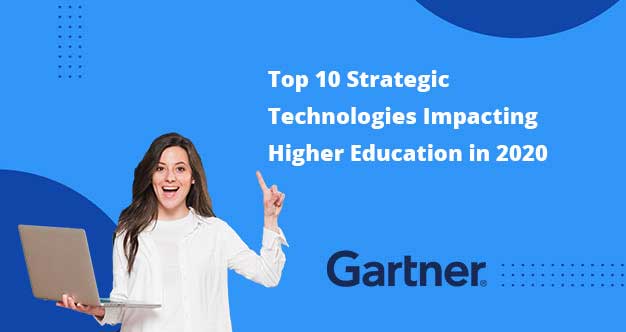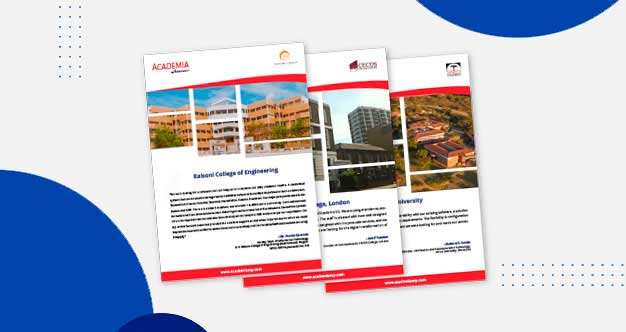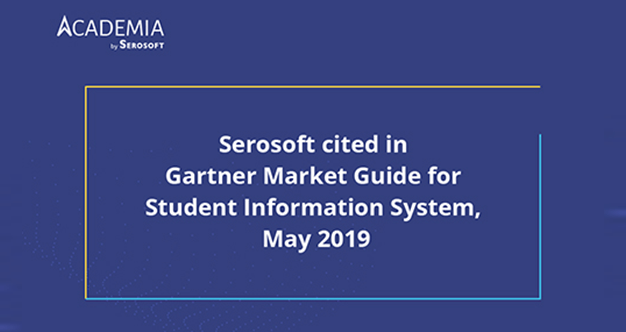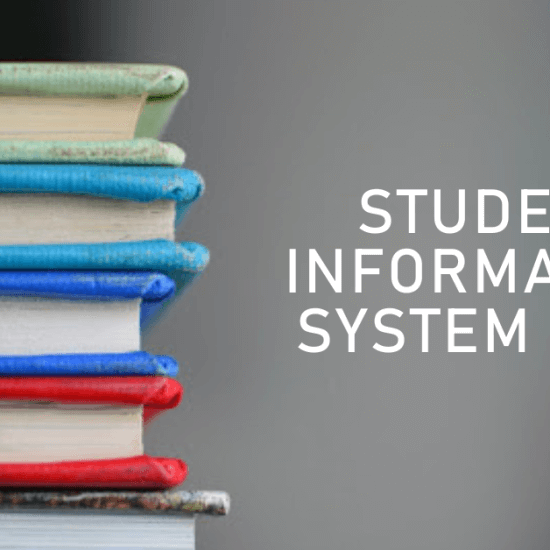Understanding ERP Systems in Higher Education
In the ever-evolving landscape of higher education, institutions are constantly seeking innovative solutions to streamline their processes and enhance their operations. One such solution that has gained significant traction in recent years is the implementation of Enterprise Resource Planning (ERP) systems. These systems offer a comprehensive suite of integrated software applications designed to manage various aspects of an institution’s operations, including administrative, academic, and financial functions. In this article, we will delve into the world of ERP systems in higher education, exploring their benefits, key features, and best practices for implementation.
Table of Contents
- What is an ERP System?
- Definition of ERP Systems
- Evolution of ERP Systems in Higher Education
- Benefits of ERP Systems in Higher Education
- Streamlined Administrative Processes
- Enhanced Data Integration and Accessibility
- Improved Decision-Making and Planning
- Key Features of ERP Systems in Higher Education
- Student Information System (SIS)
- Financial Management
- Human Resources and Payroll
- Procurement and Supply Chain Management
- Best Practices for Implementing ERP Systems in Higher Education
- Needs Assessment and Vendor Selection
- Customization and Integration
- Change Management and Training
- Choosing the Right ERP System for Higher Education
- Factors to Consider
- Future Trends in ERP Systems for Higher Education
- Cloud-Based Solutions
- Artificial Intelligence and Machine Learning Integration
- Mobile Accessibility
- Conclusion
1. What is an ERP System?
Definition of ERP Systems
Enterprise Resource Planning (ERP) systems are integrated software applications that facilitate the management of an organization’s resources by automating and integrating various business processes. These systems provide a centralized database that enables different departments within an institution to access and share information in real time, promoting operational efficiency and data accuracy.
Evolution of ERP Systems in Higher Education
ERP systems have a rich history in the corporate world, where they have been widely adopted to streamline business operations. However, their application in the higher education sector is a relatively recent phenomenon. As institutions face increasing pressure to improve efficiency, reduce costs, and enhance student services, ERP systems have emerged as a promising solution to address these challenges.
Traditionally, higher education institutions relied on disparate systems and manual processes to manage their administrative, academic, and financial functions. This fragmented approach often led to data inconsistencies, redundant tasks, and limited visibility into key metrics. In response to these challenges, institutions began exploring the adoption of ERP systems tailored specifically for higher education.
2. Benefits of ERP Systems in Higher Education
Streamlined Administrative Processes
One of the primary benefits of implementing an ERP system in higher education is the streamlining of administrative processes. These systems automate routine tasks such as registration, admissions, course scheduling, and grading, reducing the administrative burden on staff and faculty. With centralized data management, institutions can eliminate duplicate data entry and ensure data integrity across various departments.
Enhanced Data Integration and Accessibility
ERP systems facilitate seamless integration of data across different departments, enabling a holistic view of an institution’s operations. This integrated approach allows administrators, faculty, and staff to access accurate and up-to-date information, improving communication, collaboration, and decision-making. For example, student information stored in the system can be easily accessed by advisors, faculty, and administrators, enabling personalized support and efficient academic planning.
Improved Decision-Making and Planning
By providing real-time data and analytics, ERP systems empower higher education institutions to make informed decisions and develop effective strategic plans. With access to key performance indicators, such as enrollment trends, student retention rates, and financial projections, administrators can identify areas of improvement, allocate resources effectively, and optimize institutional performance. These systems also enable institutions to generate customized reports and dashboards, providing actionable insights for data-driven decision-making.
3. Key Features of ERP Systems in Higher Education
Student Information System (SIS)
The Student Information System (SIS) is a core component of ERP systems in higher education. It encompasses a range of functionalities related to student administration, including admissions, registration, academic records, financial aid, and student billing. SIS modules facilitate the seamless flow of information throughout the student lifecycle, from recruitment to graduation, ensuring efficient student management and support services.
Financial Management
Financial management modules within ERP systems enable higher education institutions to streamline their financial operations, including budgeting, accounting, purchasing, and grants management. These modules provide a comprehensive view of financial transactions, automate financial processes, and support compliance with regulatory requirements. Institutions can generate financial reports, track expenses, and manage budgets efficiently, enhancing financial transparency and accountability.
Human Resources and Payroll
ERP systems for higher education typically include modules for human resources and payroll management. These modules centralize employee data, automate payroll processes, manage benefits administration, and facilitate employee self-service functionalities. By automating routine HR tasks, institutions can reduce administrative overhead, improve accuracy in payroll processing, and enhance employee satisfaction.
Procurement and Supply Chain Management
Procurement and supply chain management modules within ERP systems enable higher education institutions to streamline their purchasing processes, manage inventory, and track supplier relationships. These modules automate procurement workflows, facilitate vendor management, and support strategic sourcing initiatives. By optimizing procurement processes, institutions can achieve cost savings, improve operational efficiency, and ensure compliance with procurement policies.
4. Best Practices for Implementing ERP Systems in Higher Education
Needs Assessment and Vendor Selection
Before embarking on an ERP implementation project, it is crucial for higher education institutions to conduct a thorough needs assessment to identify their specific requirements and pain points. This assessment should involve key stakeholders from various departments to ensure comprehensive input. Once the needs assessment is complete, institutions can initiate the vendor selection process, evaluating vendors based on their track record, product functionality, scalability, and customer support.
Customization and Integration
While ERP systems offer a range of out-of-the-box functionalities, customization may be necessary to align the system with an institution’s unique processes and requirements. However, customization should be approached with caution, as excessive modifications can lead to increased costs, longer implementation timelines, and difficulties in system upgrades. Institutions should prioritize customization efforts based on their strategic goals and focus on integrating existing systems with the ERP to minimize disruption.
Change Management and Training
Implementing an ERP system in higher education requires effective change management practices and comprehensive training programs. Institutions should communicate the purpose and benefits of the ERP system to all stakeholders, addressing any concerns and resistance to change. Training programs should be developed to ensure that end-users are equipped with the necessary skills to maximize the system’s potential. Ongoing support and regular feedback loops are essential to facilitate a smooth transition and optimize user adoption.
5. Choosing the Right ERP System for Higher Education
Factors to Consider
When selecting an ERP system for higher education, institutions should consider several factors. These include:
- Scalability: The system should have the ability to accommodate the institution’s current and future needs as it grows and evolves.
- Integration Capabilities: The ERP system should be able to integrate with existing systems and applications, such as learning management systems and CRM software.
- Vendor Support and Reputation: Institutions should assess the vendor’s track record, customer support services, and reputation within the higher education sector.
- Security and Compliance: Data security and compliance with industry regulations, such as FERPA, should be a top priority when selecting an ERP system.
- Total Cost of Ownership: Institutions should evaluate the total cost of ownership, including licensing fees, implementation costs, ongoing maintenance, and support.
It is crucial for institutions to thoroughly evaluate the features, functionalities, and compatibility of each ERP system to determine the best fit for their specific needs.
6. Future Trends in ERP Systems for Higher Education
Cloud-Based Solutions
The adoption of cloud-based ERP systems is expected to increase in the higher education sector. Cloud solutions offer several advantages, including reduced infrastructure costs, scalability, and enhanced accessibility. Institutions can benefit from automatic software updates, improved data security, and the ability to access the system from anywhere, anytime.
7. Artificial Intelligence and Machine Learning Integration
As artificial intelligence (AI) and machine learning (ML) technologies continue to advance, ERP systems are incorporating these capabilities to further enhance their functionalities. AI and ML can automate routine tasks, provide predictive analytics, and enable intelligent decision-making. For example, chatbots powered by AI can assist students with inquiries, freeing up staff time for more complex tasks.
Mobile Accessibility
With the proliferation of mobile devices, ERP systems are increasingly focusing on mobile accessibility. Mobile applications allow students, faculty, and staff to access important information, complete tasks, and receive smartphone or tablet notifications. This mobility promotes flexibility and convenience, enabling stakeholders to stay connected with the institution’s operations on the go.
8. Conclusion
ERP systems have become a game-changer in the higher education sector, offering institutions the opportunity to streamline their operations, improve efficiency, and enhance student services. By integrating various administrative, academic, and financial functions, there are ERP systems like Academia ERP, that provide a holistic view of an institution’s operations, enabling informed decision-making and strategic planning. As the higher education landscape continues to evolve, institutions that embrace ERP systems will be better positioned to navigate the challenges and seize the opportunities of the future.
Implementing an ERP system in higher education requires careful planning, effective change management, and ongoing support. Institutions should conduct a thorough needs assessment, select the right vendor, and prioritize customization efforts based on their strategic goals and requirements. By following best practices and leveraging the benefits of ERP systems, higher education institutions can transform their operations and empower their stakeholders for success in the digital age.
About Academia ERP:
Academia ERP is a robust, feature-rich, analytics-equipped, user-friendly ERP – built on a cutting-edge and flexible architecture – that enables educational institutions to automate & streamline their functions and processes for both learning and administration, from prospecting to graduation. We have a presence in 24 countries and have served 350+ institutions so far.
About Serosoft Solutions:
Serosoft is a leading educational software and solutions company, promoted by a dynamic team of erstwhile I-Bankers, US graduates, and MBAs. We are part of the prestigious 50-year-old Hindustan Group of Companies.
Related Posts:
 Higher Ed Plans
Higher Ed Plans K12 Plans
K12 Plans










